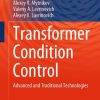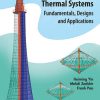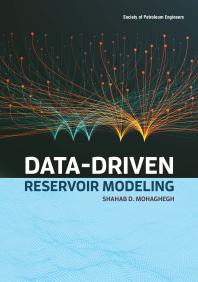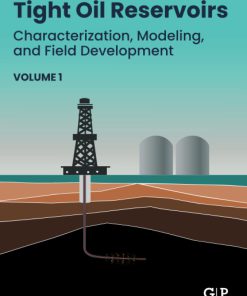Reservoir Simulations Machine Learning and Modeling 1st Edition by Shuyu Sun, Tao Zhang ISBN 9780128209578 0128209577
$50.00 Original price was: $50.00.$25.00Current price is: $25.00.
Reservoir Simulations Machine Learning and Modeling 1st Edition by Shuyu Sun, Tao Zhang – Ebook PDF Instant Download/Delivery: 9780128209578 ,0128209577
Full download Reservoir Simulations Machine Learning and Modeling 1st Edition after payment
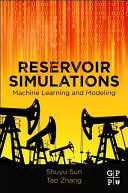
Product details:
ISBN 10: 0128209577
ISBN 13: 9780128209578
Author: Shuyu Sun, Tao Zhang
Reservoir Simulation: Machine Learning and Modeling helps the engineer step into the current and most popular advances in reservoir simulation, learning from current experiments and speeding up potential collaboration opportunities in research and technology. This reference explains common terminology, concepts, and equations through multiple figures and rigorous derivations, better preparing the engineer for the next step forward in a modeling project and avoid repeating existing progress. Well-designed exercises, case studies and numerical examples give the engineer a faster start on advancing their own cases. Both computational methods and engineering cases are explained, bridging the opportunities between computational science and petroleum engineering. This book delivers a critical reference for today’s petroleum and reservoir engineer to optimize more complex developments.
- Understand commonly used and recent progress on definitions, models, and solution methods used in reservoir simulation
- World leading modeling and algorithms to study flow and transport behaviors in reservoirs, as well as the application of machine learning
- Gain practical knowledge with hand-on trainings on modeling and simulation through well designed case studies and numerical examples.
Reservoir Simulations Machine Learning and Modeling 1st Edition Table of contents:
1. Introduction
1.1 Introduction
1.2 Definitions
1.2.1 General definitions
1.3 Single-phase rock properties
1.4 Wettability
1.5 Fluid displacement processes
1.6 Multiphase rock/fluid properties
1.6.1 Two-phase relative permeability
1.6.2 Three-phase relative permeability
1.7 Terms
1.7.1 Navier–Stokes equations
1.7.1.1 Conservation of mass (continuity equation)
1.7.1.2 Conservation of linear momentum
1.7.1.3 Conservation of energy
References
Further reading
2. Review of classical reservoir simulation
2.1 Sharp interface models
2.1.1 Modeling of two-phase flows at pore scale
2.1.2 Sharp interface models and interfacial conditions
2.1.2.1 Sharp interface models
2.1.2.2 Interfacial conditions
2.1.3 Numerical methods for sharp interface models
2.1.3.1 Volume of fluid method
2.1.3.2 Level set method
2.1.3.3 Volume of fluid and level set method
2.1.3.4 Method of moving grids
2.1.3.5 Method of marker particles
2.1.3.6 Comparison among numerical methods
2.2 Cahn–Hilliard-based diffuse interface models
2.2.1 Motivation and derivation of the Cahn–Hilliard model
2.2.1.1 Background
2.2.1.2 Motivation of (time-dependent) Cahn–Hilliard equation
2.2.2 A formal derivation of the N–S/C–H model
2.2.2.1 Anisotropy of the stress tensor
2.2.2.2 A planar interface
2.2.3 Consistency of the N–S interfacial term and C–H model
2.2.3.1 Equilibrium condition and partial differential equation from Cahn–Hilliard model
2.2.3.2 Implication of equilibrium partial differential equation
2.2.3.3 Equation for mechanical equilibrium
2.2.3.4 Consistency of equilibrium conditions
2.2.4 The N–S/C–H model with boundary and initial conditions
2.2.4.1 No-slip boundary conditions
2.2.4.2 Momentum and mass balances
2.2.4.3 Generalized Navier boundary condition
2.2.4.4 Dynamic boundary conditions and nonpenetration boundary conditions
2.2.4.5 Dimensionless modeling equations and boundary conditions
2.3 Dynamic Van der Waals theory
2.3.1 Motivation
2.3.2 Introduction of dynamic Van der Waals theory
2.3.2.1 van der Waals theory
2.3.2.2 Gradient theory and equilibrium conditions
2.3.3 Generalized hydrodynamic equations
2.4 Multiphase porous flow solvers
2.4.1 Incompressible two-phase flow solver
2.4.1.1 Choice of primary variables
2.4.1.2 Modeling of wells
2.4.1.3 Pressure equation for two-phase flow
2.4.1.4 Saturation equation for two-phase flow
2.4.1.5 The implicit pressure, explicit saturation formulation for incompressible two-phase flow
2.4.1.6 A revised implicit pressure, explicit saturation formulation by Hoteit and Firoozabadi
2.4.2 The implicit pressure, explicit saturation method for compressible two-phase porous flow
2.4.2.1 Compressible two-phase flow equations
2.4.2.2 Two-phase fluid compressibility
2.4.2.3 The pressure equation for two-phase flow
2.4.2.4 The saturation equation for two-phase flow
2.4.2.5 The implicit pressure, explicit saturation formulation for compressible two-phase flow
2.5 Wellbore modeling
2.5.1 Overview of well modeling
2.5.2 Analytical solutions for flow near the well
2.5.3 Modeling well using cell-centered finite difference methods
2.5.3.1 Overview of Peaceman’s study: three different approaches
2.5.3.2 Isotropic media on square grids: simplified by symmetry
2.5.3.3 Bottom hole pressure
2.5.3.4 Link between bottom hole pressure and cell-centered pressure
2.5.4 Extensions of well modeling
2.5.4.1 Extension to anisotropic media
2.5.4.2 Equivalent radius and well index
2.6 Solute transport in porous media
2.6.1 Introduction on solute transport in porous media
2.6.1.1 Terminologies
2.6.1.2 Subprocesses of solute transport in porous media
2.6.1.3 Solute transport modeling
2.6.2 Modeling equations for solute transport in porous media
2.6.2.1 Simplified solute transport scenario
2.6.2.2 Solute transport equation: advection and diffusion–dispersion
2.6.2.3 A coupled system in c and p
2.6.3 Advection
2.6.3.1 Advection and its properties
2.6.3.2 Advection equation for a conserved quantity
2.6.3.3 Advection equation for incompressible/steady flow
2.6.3.4 Difficulty in solving advection equations
2.6.4 Upwind-biased schemes
2.6.4.1 Upwind scheme
2.6.4.2 The first-order upwind finite difference scheme
2.7 Dynamic sorption in porous media
2.7.1 The phenomenon of adsorption
2.7.1.1 Adsorption
2.7.1.2 Equilibrium adsorption versus kinetic adsorption
2.7.1.3 Effecting factors of sorption
2.7.1.4 The role of diffusion and the rate-limiting step
2.7.2 Adsorption isotherms
2.7.2.1 Partitioning coefficient (distribution coefficient)
2.7.2.2 Linear isotherm
2.7.2.3 Freundlich isotherm
2.7.2.4 Langmuir isotherm
2.7.2.5 Lindstrom–van Genuchten isotherm
2.7.3 Modeling of transport with sorption
2.7.3.1 General equations for solute transport with sorption
2.7.3.2 Linear sorption: equilibrium versus kinetics
2.7.3.3 Langmiur sorption: equilibrium versus kinetics
2.7.4 Numerical methods for transport with sorption
2.8 Black oil model
2.8.1 Introduction of black oil model
2.8.1.1 Main idea of black oil model
2.8.1.2 Mass conservation of each component
2.8.1.3 Darcy’s law and other equations
2.8.1.4 The gas solubility
2.8.1.5 The oil formation volume factor
2.8.1.6 Mass fractions of components
2.8.1.7 The gas formation volume factor
2.8.1.8 The water formation volume factor
2.8.1.9 Equations on standard volumes
2.8.2 Treatment of the wells in black oil model
2.8.3 Models for three-phase relative permeabilities
2.8.3.1 Stone I for three phases
2.8.3.2 Stone II for three phases
2.8.4 Rock and fluid properties
2.8.4.1 Rock properties
2.8.4.2 Fluid properties
2.8.5 Phase states and choice of the primary unknowns
2.8.5.1 Phase state
2.8.5.2 Choice of the primary unknowns
2.8.6 Treatment of initial conditions
2.8.6.1 Gas cap
2.8.6.2 Gas/oil transition
2.8.6.3 Oil
2.8.6.4 Oil/water transition
2.8.6.5 Water zone
2.8.6.6 Determination of initial conditions
2.8.7 Solution techniques
2.8.7.1 Simultaneous solution techniques
2.8.7.2 Sequential solution techniques
2.8.7.3 Iterative implicit pressure, explicit saturation solution techniques
2.8.7.4 Adaptive implicit techniques
References
Further reading
3. Recent progress in pore scale reservoir simulation
3.1 Phase equilibria in subsurface reservoirs
3.1.1 Peng–Robinson equation of state
3.1.2 Redlich–Kwong and Soave–Redlich–Kwong equation of state
3.1.3 Extension to mixture
3.1.4 Volume-translation technique
3.1.5 Solutions of Peng–Robinson equation of state
3.1.6 Phase split calculation
3.1.7 A successive substitution iteration example
3.2 Stable dynamic NVT algorithm with capillarity
3.2.1 Thermodynamic preparation
3.2.2 Capillarity effect
3.2.3 Thermodynamic stable numerical method
3.2.4 Semiimplicit numerical scheme
3.2.5 Thermodynamical stability
3.2.6 Phase stability analysis
3.2.7 Staggered-grid finite difference methods
3.2.8 Staggered grid
3.2.9 Staggered-grid finite difference for the stokes equation
3.2.10 Boundary treatment
3.2.11 Matrix-based implementation
3.3 Multicomponent two-phase diffuse interface models based on Peng–Robinson equation of state
3.3.1 Thermodynamical consistent model
3.3.2 Thermodynamical consistent algorithm
3.3.3 Scalar auxiliary variable scheme
3.4 Multiphase flow with partial miscibility
3.4.1 Thermodynamic preparations
3.4.2 Model for realistic fluid flow
3.4.3 Thermodynamical consistency
References
Further reading
4. Recent progress in Darcy’s scale reservoir simulation
4.1 Introductions on popular finite element methods
4.1.1 Galerkin finite element methods: general statement
4.1.2 Abstract minimization and variational problems
4.1.3 Galerkin finite element methods: settings and notations
4.1.4 Mixed finite element methods
4.1.5 Mixed–hybrid finite element methods
4.2 Links between finite-difference methods and finite element methods
4.2.1 Model problem
4.2.2 Equivalence between Galerkin finite element methods and point-centered finite-difference metho
4.2.3 Equivalence between mixed finite element methods and cell-centered finite-difference methods
4.2.4 Equivalence between mixed–hybrid finite element methods and finite-difference methods
4.3 Improved IMPES scheme
4.3.1 Classical IMPES scheme
4.3.2 Hoteit–Firoozabadi IMPES scheme
4.3.3 Compressible IMPES scheme
4.3.4 Kou-Sun (K-S) IMPES scheme
4.3.5 C-S IMPES scheme
4.4 Bound-preserving fully implicit reservoir simulation on parallel computers
4.4.1 Model and discretization
4.4.2 Parallel fully implicit solver
4.4.3 Additive Schwarz preconditioner
4.5 Reactive transport modeling in CO2 sequestration
4.5.1 Chemical systems
4.5.2 Equilibrium reactions
4.5.3 Fluid flow model
4.5.4 Algorithm
4.6 Discontinuous Galerkin methods
4.6.1 Mathematical model
4.6.2 Properties of discontinuous Galerkin
4.6.3 Adaptive mesh
4.7 Exercises for reservoir simulator designing
References
Further reading
5. Recent progress in multiscale and mesoscopic reservoir simulation
5.1 Upscaling technique
5.1.1 Upscaling for finite difference system
5.1.2 Explicit average schemes
5.1.3 Simulation-based upscaling schemes
5.1.4 Example of upscaling methods for effective permeability
5.1.5 Example of simulation-based upscaling schemes
5.2 Generalized multiscale finite element methods for porous media
5.2.1 Multiscale Galerkin finite element method
5.2.2 Oversampled techniques
5.2.3 Proper orthogonal decomposition
5.2.4 Generalized multiscale finite element methods
5.2.5 Generalized multiscale finite element method example
5.3 Multipoint flux approximation methods
5.3.1 Basic mathematical scheme
5.3.2 Example of one-dimensional problem
5.3.3 Example of two-dimensional problem
5.3.4 Three-dimensional examples and multipoint flux approximation L-method
5.4 Lattice Boltzmann method
5.4.1 From Boltzmann equation to lattice Boltzmann equation
5.4.2 Chapman–Enskog expansion to Navier–Stokes equations
5.4.3 Multiphase lattice Boltzmann method scheme based on Peng–Robinson equation of state
5.4.4 Coupled lattice Boltzmann method scheme for shale gas reservoir simulation
References
Further reading
6. Recent progress in machine learning applications in reservoir simulation
6.1 Local-similarity-based porous structure reconstruction
6.1.1 Intensity calibration
6.1.2 Extract training image patch (cube) pairs
6.1.2.1 Two-dimensional image patch pairs database establishment
6.1.2.1.1 Single-scale image patch pairs database
6.1.2.1.2 Multiscale image patch pairs database
6.1.2.2 3D image cube pairs database
6.1.3 Popular reconstruction algorithms
6.1.3.1 Neighbor embedding–based image reconstruction algorithm
6.1.3.1.1 Procedure of neighbor embedding–based Image reconstruction
6.1.3.1.2 Conclusion
6.1.3.2 Sparse representation based image reconstruction algorithm
6.1.3.2.1 Dimensionality reduction
6.1.3.2.2 Dictionary learning
6.1.3.2.3 Decomposition and reconstruction
6.1.3.2.4 Conclusion
6.1.3.3 Convolutional neural network reconstruction of porous structure
6.1.3.3.1 The convolutional neural network structure
6.1.3.3.2 Training
6.1.3.3.3 Convolutional neural network reconstruction
6.1.3.3.4 Conclusion
6.2 Numerical reconstruction of porous structure
6.2.1 Multiple-point statistics porous structure reconstruction
6.2.1.1 Profile of multiple-point statistic reconstruction
6.2.1.2 Multigrid simulation
6.2.1.3 Search tree
6.2.1.4 Pattern-based multiple-point statistic reconstruction
6.2.2 Generative adversarial neural network reconstruction of porous media
6.2.2.1 Profile of generative adversarial neural network reconstruction
6.2.2.2 Conclusion
6.3 Procedures of sparse representation reconstruction
References
Further reading
7. Recent progress in accelerating flash calculation using deep learning algorithms
7.1 Accelerated flash calculation using deep learning algorithm with experimental data as input
7.1.1 Introduction on artificial neural network
7.1.2 Technique explanation in artificial neural network
7.1.3 Case study
7.2 Accelerated flash calculation using deep learning algorithm with flash data as input
7.2.1 Deep learning model training
7.2.2 Phase splitting test
7.2.3 Network optimization
7.3 Realistic case studies
References
People also search for Reservoir Simulations Machine Learning and Modeling 1st Edition:
reservoir simulation machine learning and modeling
types of reservoir simulation models
reservoir machine learning
reservoir modeling
reservoir modelling software
Tags:
Shuyu Sun,Tao Zhang,Reservoir Simulations,Machine Learning,Modeling
You may also like…
Medicine - Pharmacology
Computers - Artificial Intelligence (AI)
Uncategorized
Data Driven Reservoir Modeling 1st Edition by Shahab D Mohaghegh ISBN 9781613995945 1613995946
Computers - Artificial Intelligence (AI)
Computers - Artificial Intelligence (AI)
Business & Economics - Professional Finance
Computers - Computer Science

